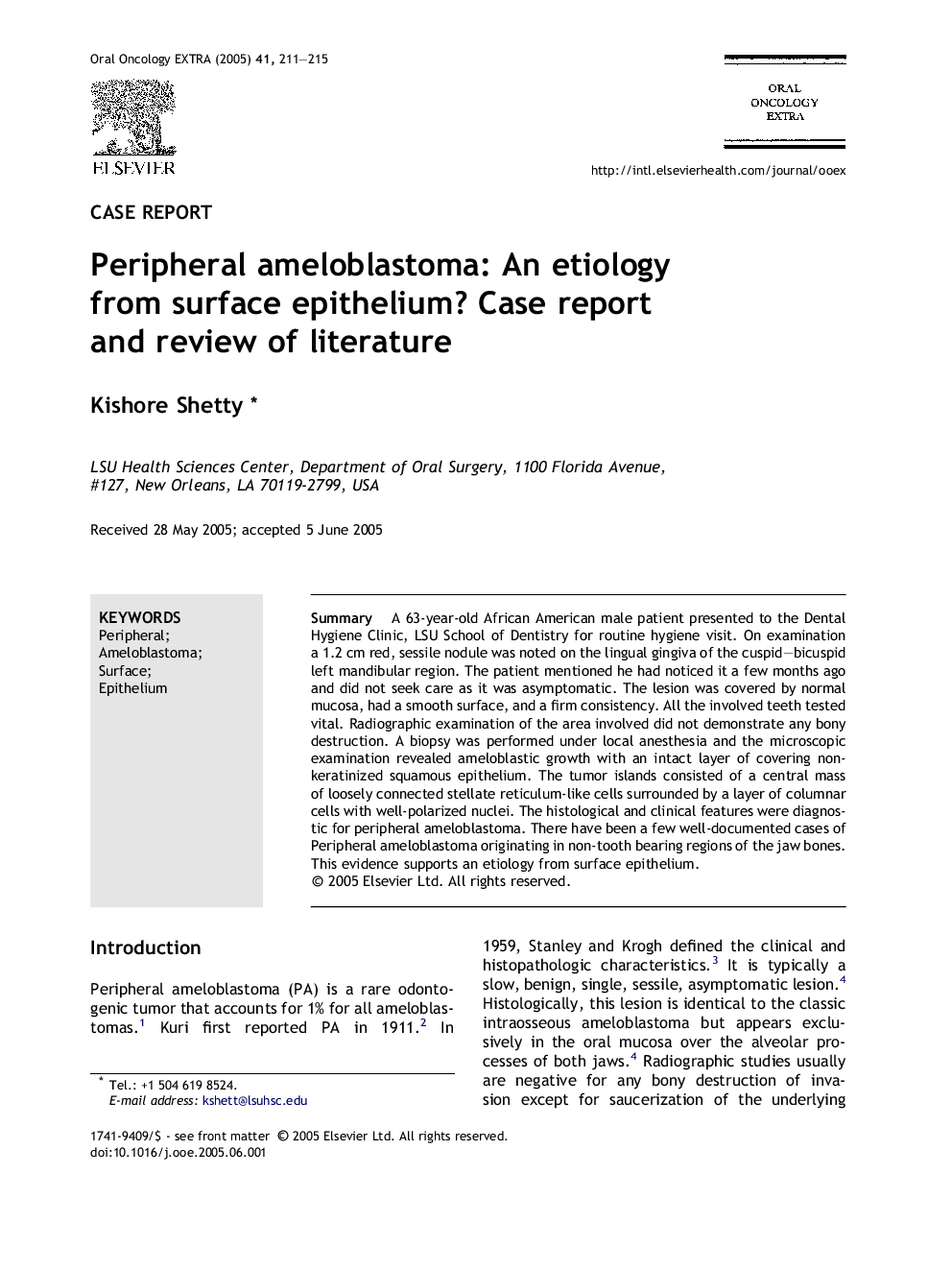| Article ID | Journal | Published Year | Pages | File Type |
|---|---|---|---|---|
| 9340264 | Oral Oncology Extra | 2005 | 5 Pages |
Abstract
A 63-year-old African American male patient presented to the Dental Hygiene Clinic, LSU School of Dentistry for routine hygiene visit. On examination a 1.2Â cm red, sessile nodule was noted on the lingual gingiva of the cuspid-bicuspid left mandibular region. The patient mentioned he had noticed it a few months ago and did not seek care as it was asymptomatic. The lesion was covered by normal mucosa, had a smooth surface, and a firm consistency. All the involved teeth tested vital. Radiographic examination of the area involved did not demonstrate any bony destruction. A biopsy was performed under local anesthesia and the microscopic examination revealed ameloblastic growth with an intact layer of covering non-keratinized squamous epithelium. The tumor islands consisted of a central mass of loosely connected stellate reticulum-like cells surrounded by a layer of columnar cells with well-polarized nuclei. The histological and clinical features were diagnostic for peripheral ameloblastoma. There have been a few well-documented cases of Peripheral ameloblastoma originating in non-tooth bearing regions of the jaw bones. This evidence supports an etiology from surface epithelium.
Related Topics
Health Sciences
Medicine and Dentistry
Oncology
Authors
Kishore Shetty,
